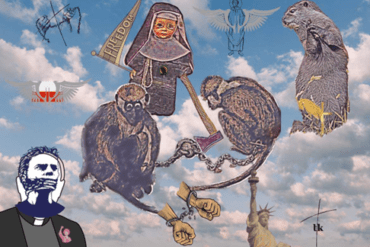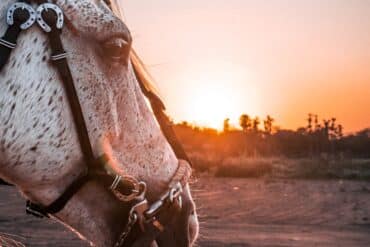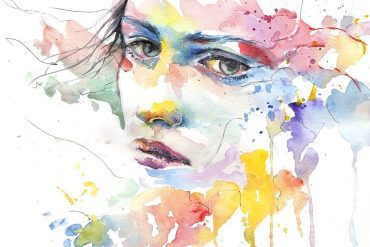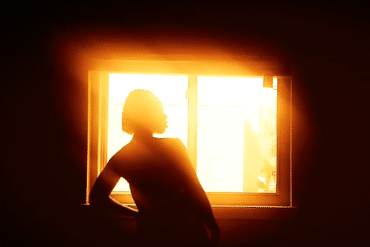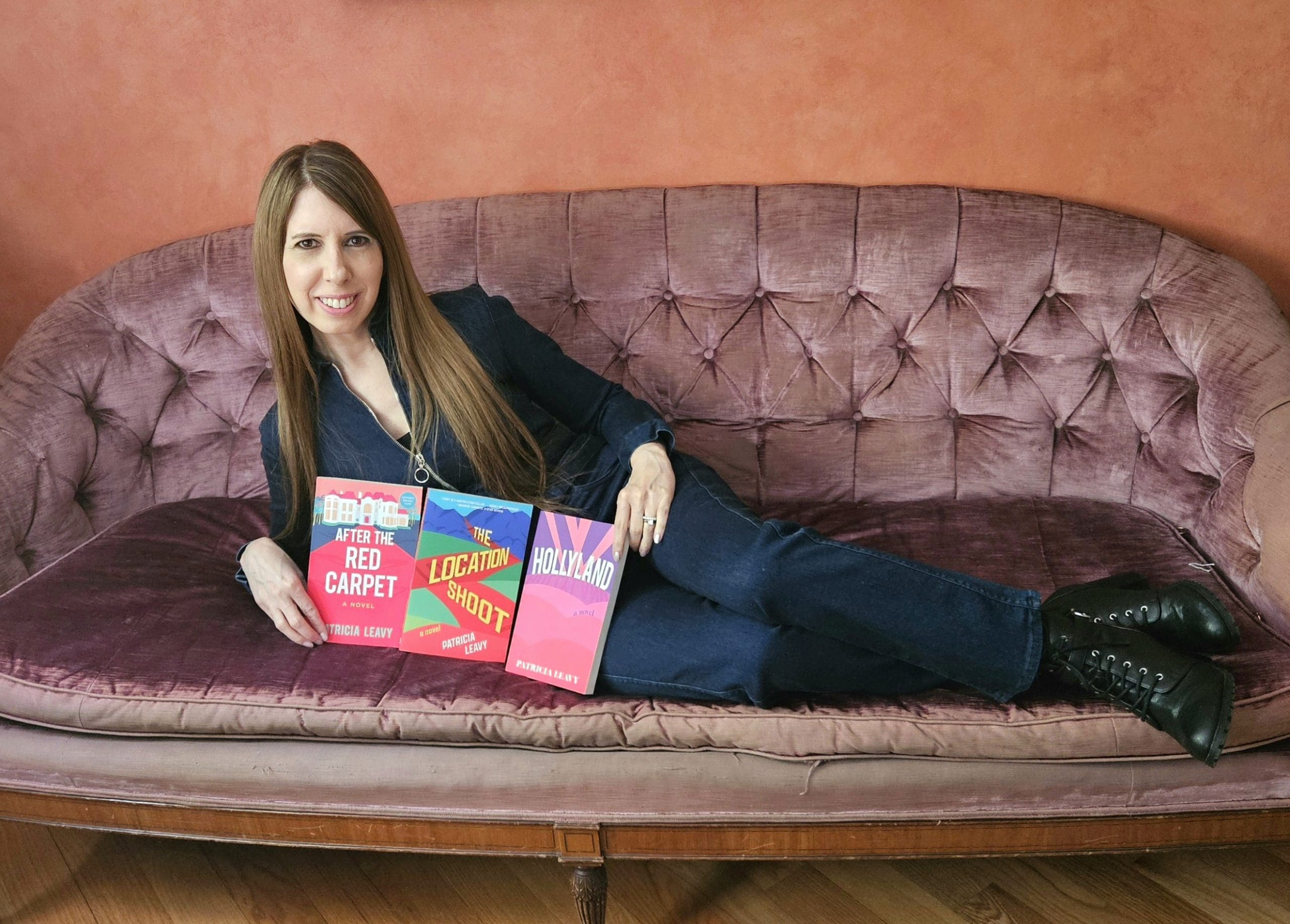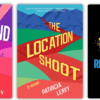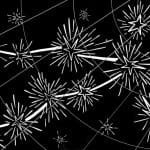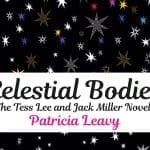My Career Part Two: A Philosophy of Love
The Work of (Women) Writers
In Part One in this series, in which I talk about the philosophy of art I aim to create, I situated my work within the broader context of the work of writers. Now, I’m situating my work within the broader context of women writers. Storytelling always has a point of view, a perspective, a vantage point. As I document or chronicle the world and my experiences in my fiction, I do so from an embodied standpoint. As I reimagine how the world may be in my fiction, this too I do from an embodied standpoint.
I share my hopes, dreams, fears, fantasies through my pen as a woman writer. Storytelling is an act of resistance. It is a method of change-making. It is the centerpiece of revolutions, big and small. So, I think about who I am as a storyteller and how that influences the stories I choose to tell and how I tell them. As creatives, everything comes through our filter. There’s no escaping it. This is the very reason we need more storytellers, not less.
‘In Part One in this series, in which I talk about the philosophy of art I aim to create, I situated my work within the broader context of the work of writers. Now, I’m situating my work within the broader context of women writers.
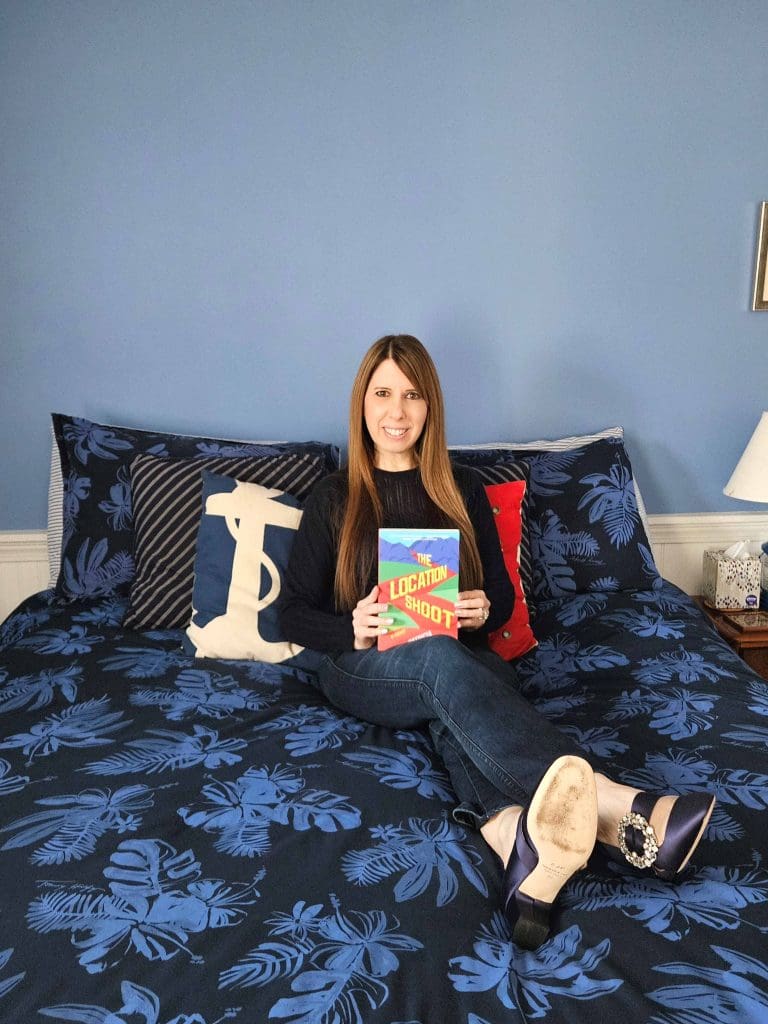
A Philosophy of Love
As I explained in Part One of this series, through my body of work I aim to create both a philosophy of the arts and a philosophy of love. In this piece, I detail the latter. While I’m going to focus on my work in fiction, to be clear, I believe this philosophy of love has also been explicitly woven into my nonfiction texts.
It manifests in different ways: through a strong social justice underpinning, attention to difference, questions about power, examples that deal centrally with inequality, calls for an ethical research practice and challenging what that means, use of inclusive language (including fighting for that behind the scenes, before these issues were more commonplace), to name but a few. It also manifests through the privileging of different ways of knowing, and all that entails, which is the explicit focus of my nonfiction work. To me, this can all be categorized under the heading: a philosophy of love. However, it is in my fiction that I have perhaps most clearly tackled the subject of love itself.
‘Storytelling always has a point of view, a perspective, a vantage point.
In recent years, readers have told me they’ve noticed a shift in my fiction. They’re right, but before I get into that, I’d like to say a few words about my early novels. From the start, I was interested in writing about love, but perhaps not in an obvious way relative to what we typically read in fiction. My early novels were about forging an identity for oneself, often in the context of toxic or complicated relationships with others, and most importantly, with oneself. For example, my debut, Low-Fat Love, was not about whether or not the protagonist ended up with a guy. It was about her learning to value herself. I aimed to subvert the typical chick-lit narrative with an empowering, feminist perspective.
The novels that followed—American Circumstance, Blue, Film (the latter of two which became Film Blue), all dealt with different dimensions of self-identity and self-actualization in the context of a range of other types of relationships as well as exposures to the messages of pop culture. My next novel, Spark, a major departure, was a work of literary fiction, told as an adventure story that followed a diverse group learning to work together across differences. I don’t want to give anything away for those who have not read it, as it’s one of the books I am most proud of, yet I will say that while it is in no way a love story, it is very much grounded in love. It is a tale about how our world works, and how it might work. After Spark, came the shift that readers have noticed. I turned to writing romance novels.
‘… I share my hopes, dreams, fears, fantasies through my pen. Storytelling is an act of resistance. It is a method of change-making. It is the centerpiece of revolutions, big and small.
There’s tremendous bias against romance novelists. It permeates the publishing industry and society. The assumption is that romances are less good, less well written, less literary, less serious than other novels. Make no mistake, this is misogyny at play. The vast majority of romance novelists are women and the vast majority of romance readers are girls and women. The message is that women’s work and women’s interests matter less. They are less serious, less important, less good. Many of the bestselling novelists write romance—from Danielle Steel with over a billion copies sold to Colleen Hoover who has been named one of the most influential people in the world.
Romance is also the top selling genre, by miles, and the most profitable. Remarkable it isn’t taken more seriously, but then again, much of it is created and consumed by women. If you’re not convinced that the genre isn’t treated the same as others, bear in mind that many of the biggest funding sources for novelists, such as the National Endowment for the Humanities, explicitly prohibits romance novelists from applying, claiming in their submission guidelines that the genre does not have the same merit as others. The bias goes deep. Naturally, this makes me wonder why “those who are they” are so threatened. Just how powerful are romance novels?
So, I think about who I am as a storyteller and how that influences the stories I choose to tell and how I tell them. As creatives, everything comes through our filter. There’s no escaping it. This is the very reason we need more storytellers, not less.
Romance novels espouse the hopes, dreams, fantasies, and emotional life of their readers and writers. They take seriously women’s feelings, experiences, and sexuality. Regarding sexuality, bear in mind the sex depicted in romance novels is often written from the perspective of women, something we rarely see in the culture. Moreover, romance novels are about love. As far as I’m concerned, there is no more important topic in the world. It is indeed the one thing there is never enough of. Without love, there is no compassion, no humanity. Amazing romance novels aren’t taken more seriously.
In my own work, I decided there was no better way to explore the concept of love, and to make my contribution rewriting culture. Remember, storytelling is an act of resistance. It is a change-maker. I write romance novels for these very reasons, and because they make me feel so freaking good for which I offer no apology.
Hollyland
Hollyland is a love story between 40-year-old arts researcher Dee Schwartz and 50-year-old movie star Ryder Field, who descends from Hollywood royalty. Bonded by a shared love of art and desire to live with passion, as well as grief over losing their mothers at a young age, the two embark on a sexy and sweet search for magic—or gold dust—in their lives. This is a story about what love looks like and feels like. It’s a deeply affectionate story about real, unselfish, giving, fulfilling love. Like many romance novels, it isn’t only about romance, but all kinds of love, including love of our work, of art, and those we hold most dear.
It’s also about who the real movie stars are on the big screen of our lives. You see, I wrote it during the 2020 lockdown. My elderly father to whom I’m extremely close got a serious case of covid, well before the vaccine. At the time it seemed like we might lose him and due to the pandemic, I couldn’t get to him. It was awful. So, I wrote Hollyland as a love letter to my dad. That’s the thing about fiction, there’s always a public story, and a private one too.
An excerpt from when Dee and Rye decide to spend their lives together (p. 132-134).
He kissed her gently and said, “That sounds perfect. Go ahead and ask them. Sweetheart, I wanted to talk to you about what my work life is like. I made a lot of mistakes in my first marriage because we never talked about any of it. I foolishly thought that just being married was enough and I don’t want to make the same mistakes with you. This has to be a partnership.”
“What are you saying?”
“I’ve been between projects since we met, but I’ve told you what my life is normally like. When I start the new TV show, things will be pretty stable since we’re filming in LA, but even then, if I get a good film script or go on the road again with the band on my hiatuses, I’m worried about our relationship. I’d love for you to come with me, but I respect that you have a life of your own. Your work is so important. I’m in awe of it. Please know I would never let it take a back seat.”
“Rye, can I tell you something?”
“Anything, my love.”
‘As I explained in Part One of this series, through my body of work I aim to create both a philosophy of the arts and a philosophy of love. In this piece, I detail the latter.
“I’ve always had this fantasy of what love would be like, what life could be like. It’s simple, really: two people waking up together each day, loving each other, going out into the world and doing their own amazing things, then crawling into bed together at night and falling asleep in each other’s arms. That’s what I want for us. I want us to always be this close and for each of us to be more of who we are, not less.”
“I want that too,” he said, stroking her hair. “There’s a reason that very little lasts in Hollywood. How do we do this?”
“Smart, caring people can figure almost anything out. With a little planning, we won’t have to give up anything. The truth is, most of the time, I can work from anywhere. I’m happy to go on the road with you. New places always inspire me.”
“Dee, I need you to know I’m not going to fuck this up. I’m done thinking only of myself. You will come first.”
‘While I’m going to focus on my work in fiction, to be clear, I believe this philosophy of love has also been explicitly woven into my nonfiction texts.
“Honey, I know how ambitious you are and what you hope to accomplish. Acting and music are your calling, your passion. They’re a big part of what makes you who you are, and I love who you are. Please don’t think you have to choose or construct a hierarchy. There are no limits for your work or mine. We’ll do it all together.”
He kissed her and said, “I can’t wait to marry you.”
“Me too.”
“We never talked about children. Is that something you want?” he asked.
“Yes, but I’ve always been scared. Losing my mother so young…”
“I know,” he said, tucking her hair behind her ear.
“Being an only child was hard too. But I always dreamed of being pregnant, being a mother. What about you?”
‘It manifests in different ways: through a strong social justice underpinning, attention to difference, questions about power, examples that deal centrally with inequality, calls for an ethical research practice and challenging what that means, use of inclusive language (including fighting for that behind the scenes, before these issues were more commonplace), to name but a few.
“I obviously prioritized my career. If I have my work and I have you, I will be happy, but…”
“Yeah?”
“Sweetheart, I would love to have a family with you.”
“Really?”
“Yes,” he said softly. “I promise I would give it everything. We have the means to figure out how to focus on our children while still pursuing our careers to the extent we want to. We’re older than most first-time parents, so there may not be a lot of time. After we get married, maybe we could start trying and just see what happens. What do you think?”
“I think I’m completely in love with you. And even though we’re not trying to make a baby quite yet, I think that I absolutely have to have you again. Make love with me.”
He smiled, grabbed her, and pulled her on top of him.
An excerpt from their wedding day (my favorite scene) (p. 140-141).
“Sweetheart, I got you a wedding present. Come into the house so I can give it to you in private.” He took her hand and they walked inside.
“I got you a little something too. Let me run upstairs to get it,” she said.
He waited at the bottom of the staircase, and when she returned, he led her to Seymour’s home screening room. He held both of her hands in his and said, “You told me that you lost your mother’s voice. I spoke to your father, and it turns out that Seymour, being the film enthusiast he is, made home movies of your parents on a camcorder when you were a little girl. Your father said you used to run away from the camera because you were so shy, so that’s probably why you don’t remember. Seymour went digging through his warehouse.” He stopped and kissed her hands. “Sweetheart, he found the videos. We had them transferred onto a disc. I gave your father a copy too.”
Her eyes became misty, her lips quivering. He squeezed her hands and said, “Just sit here.”
‘From the start, I was interested in writing about love, but perhaps not in an obvious way relative to what we typically read in fiction. My early novels were about forging an identity for oneself, often in the context of toxic or complicated relationships with others, and most importantly, with oneself.
She sat down, a bit stunned, and he darted to the back of the room. He turned the lights off, hit play, and then took the seat beside her, handing her a preemptive tissue. Suddenly, Lisette Schwartz was on the screen, talking and laughing, as radiant as a movie star.
“Oh my God,” Dee gasped as her eyes flooded with hot tears. A moment later, Lisette twirled little Dee around. She couldn’t have been more than five years old. Dee tried to run behind her mother, shy in front of the camera. Lisette laughed and said, “My sweet little Deanna.” She scooped her up and said, “I love you, sweet girl.”
When the video ended, Dee looked at Rye through a film of hot tears. He gently brushed away the salty water and pressed his forehead to hers. When she was able to speak again, she softly said, “You gave me my mother’s voice.”
“Seymour helped,” he replied.
“You gave me my mother’s voice. I love you more than I could ever say.”
He kissed her softly. “I love you with all my heart. Forever.”
The Location Shoot
The Location Shoot is by far one of my favorites, if not my favorite. I wrote it during the 2020 lockdown. Due to the pandemic, I was thinking about the big questions of life, and so the novel is about a group making a film about the meaning of life. An eccentric filmmaker is shooting a film in Sweden over the summer where he lives in an inn with the lead actors. Before arriving in Sweden, we get a glimpse into the lives of the actors in the cast—each at a personal crossroads. The filmmaker invites his friend Ella Sinclair, a beautiful, free-spirited, provocative philosopher to join them for the summer.
Hollywood star Finn Forrester is instantly enchanted by her and the two fall madly in love. Meanwhile, the film they’re all making is about the meaning of life. The subject of the film and the deep bonds the group builds over the summer push everyone to reflect on their own lives. When the shoot ends, each returns home, changed. The group reconvenes months later on the red carpet at the Cannes Film Festival and all questions are answered. The Location Shoot is about love: What does it mean to love? What does love do to each of us?
An excerpt from a group dinner at the inn one night, when Ella reveals it is Albie’s birthday and over dessert, she asks him to share the story of how he met his wife (p. 63-64).
They all began eating and Albie said, “I met her at a party in London thrown by some aristocrat. Completely pretentious. I was the lead in a play on the West End, and the director invited me. You know how that blue-blooded set loves to have a celebrity in their midst, something to gab about when they’re at their holiday homes.”
Everyone laughed.
‘The Location Shoot is by far one of my favorites, if not my favorite. I wrote it during the 2020 lockdown. Due to the pandemic, I was thinking about the big questions of life, and so the novel is about a group making a film about the meaning of life.
Albie took a bite of his tart and continued, “I brought a girl with me, some actress, can’t even remember her name. We were all dressed in absurdly formal attire, could hardly tell the guests from the waitstaff, eating catered, crustless watercress sandwiches or some such rubbish. All of a sudden, in walks a stunningly beautiful woman wearing a simple, sky-blue frock and holding a pie. It’s hard to overstate how extraordinarily out of place she looked. I was immediately transfixed. She had the biggest, most beautiful eyes, and her hair fell in waves.” He paused, as if reliving every detail. “Anyway, the host’s wife ran over, greeted her, and ferried the pie over to the dessert table. I couldn’t take my eyes off this woman. The way she moved, her smile, the way her eyes sparkled when she laughed.
‘The Location Shoot is about love: What does it mean to love? What does love do to each of us?
I watched her for hours. I asked someone about her, and they said she was an elementary school teacher who happened to know the sister of the host. Eventually, I saw her standing alone at the dessert table and decided to make my move. The table was covered in mile-high meringues and fancy chocolate tortes encased in sugar domes, no doubt from the finest bakery in London, and there was her humble homemade pie off to the side. I sidled up to her and said, ‘Everything looks good.’
She smiled at me and I felt like I was struck by lightning. I picked up a plate and a serving utensil and said, ‘I think I’m going to try this one,’ and I took a slice of the blueberry pie. She looked at me and said, ‘I made that. To tell you the truth, I feel like a bit of a fool. I didn’t know what kind of party it was.’ I said, ‘I’m Albie, what’s your name?’ In her angelic voice, she said, ‘Margaret.’ I’ll tell you, I fell completely in love with her then and there.”
He kissed her softly. “I love you with all my heart. Forever.”
“What about your date?” Michael asked.
“Broke up with her at the party. I called a car for her and sent her home. Felt terrible about it, but when you meet the one, you can’t let anything stand in your way. True love is the greatest gift in the world; one mustn’t squander it or be foolish enough to think it will simply wait until it obliges our schedules.”
“So, it really was love at first sight,” Charlotte said wistfully.
“Indeed. Anyone who tells you that love at first sight isn’t real, well, those unlucky bastards have just never experienced it. Take it from an old fucker like me: when you get hit by lightning, you surrender to it. All the details, the little things you don’t know about each other, you’ll learn those over time, and if you really love each other, most of it won’t matter. There’s no replacing that inexplicable, inconvenient, all-encompassing feeling of love. Standing there in that moment, holding that slice of pie, I knew I couldn’t live without her. These days, people court each other like they’re applying for a job or running through a checklist. But this is where the artists—the poets, the novelists, the filmmakers—have always known better: true love has no reason.”
An excerpt from a private scene between Ella and Finn (p. 150-151).
She looked deep into his eyes and said, “Finn, why do we love each other?”
“Because we can’t help it. We can’t help it but to love each other.” He kissed her softly and then rested his forehead against hers. He lingered for a long, intimate moment, and whispered, “Because we do. We just do.”
“Yes, but…”
“Does it really matter? We feel what we feel.”
“I know, but…”
“Do you really need to know why?” he asked. “I don’t know if I could explain it.”
“I’ve spent my entire adult life asking big questions about human existence, searching for reason, and now…” She sighed and thought for a moment, the words escaping her again. “My life was one thing and now it’s something else, and your life was also one thing and now it’s something else, just because we met, because of this inexplicable feeling we have for each other. How does that happen?”
“I don’t know. The only thing I know for sure is that what we have together is bigger than what I have without you. How we feel about each other, it’s everything, Ella.”
“You’ve been with so many women. Why me and not any of them?”
“Because I’m in love with you. The best way I can explain it is to say that when we’re together, it’s like I have the answer to a question I didn’t know I was asking.”
She smiled. “That’s so romantic. But…”
“What, baby?”
“The first night we were together, you said you love me and you always will. How can you possibly know that?”
“I trust what we have.”
After the Red Carpet
I loved writing Ella and Finn’s story so much, that I decided to continue it. After the Red Carpet picks up where The Location Shoot ends. It follows Ella and Finn for the next five years as they build a life, home, and family together. Over the course of the novel, Ella is writing a philosophical treatise on love. As you can imagine, I explicitly wove my own philosophy of love into this book through Ella’s work.
After the Red Carpet is an exploration what happens when “me” becomes “we.” From a literary perspective, it’s a spin on a classic Cinderella story, with a subversive twist. In some ways, I view this novel as my simplest love story, and there within is also the subtle complexity. It asks such questions as what love is, what it means to love and what happens to our borders when we love another so deeply.
An excerpt from when Ella and Finn are in London entering an awards reception where their friend will be honored (pp. 102-103).
Finn and Ella strolled down the long red carpet at the famed Royal Albert Hall, arm in arm behind the rest of the Celebration team.
“Somehow I’ve never been here before,” Finn said.
“Well, you’re in for a treat. It’s extraordinary inside. Concerts here are wonderful.”
“I’ll have to get us tickets sometime.”
“Funny story about how this place came to be. Prince Albert wanted to create a hall to celebrate the arts and sciences, to bring culture to the people. He died before it was completed, and Queen Victoria insisted it should be named after him. They even wove the letter A into the stairway railings. Then of course she had that obscenely pricey, gold memorial statue created outside, across the road from the hall. She spent the rest of her life wearing black, to show her deep mourning.”
“She must have really loved him.”
Ella shrugged.
“What?” Finn asked.
“Oh, I don’t know. I’m sure she did love him, in her own way, but perhaps it would have meant more to simply realize his vision. He wanted this place to be about the arts, not about him. Love isn’t about gold statues or opulence. The grandest gesture is seeing someone for who they are and honoring what’s important to them.”
An excerpt from a conversation between Ella and her, cynical best friend, Marni (p. 185-186).
Ella sat quietly for a moment. “Do you remember when I first moved to LA and you told me not to let love change me?”
Marni nodded.
“It has. Since I met Finn and we decided to build a life together and have a family,” she said, placing her hand on her belly, “I’m different.”
“Ella, when I said that thing about changing, I only meant not to lose yourself. I didn’t mean don’t change at all. Fuck, everyone changes. As for romantic love and all that hooey, as far as I can see, Finn has made you more of who you are, not less. These past few years, you’ve been happier, more grounded, and freer than you ever were before. That’s because of Finn and these rug rats you’re popping out.”
Ella smiled. “I love them so much. I do. It’s just . . .”
“Tell me.”
Ella took a breath. “When we love so deeply, it’s like it changes our DNA or something. We start to see everyone differently. We move through the world differently.” She stopped to shake her head. “It’s hard to explain. I don’t want to be someone who takes that call from her deadbeat dad, but at the same time, I don’t know how not to be her. Not anymore.”
“You know, this is the philosopher in you. Some of us have a shitty experience and we stick our head in a tub of ice cream and call it a day. But you’ve always asked the big questions, of both the world and of yourself. Maybe instead of moping and wallowing, you can use this as fuel. Hell, you’re writing a treatise about love. That’s some complex shit. Take a deep dive on paper. See where it takes you.”
‘I loved writing Ella and Finn’s story so much, that I decided to continue it. After the Red Carpet picks up where The Location Shoot ends.
“I haven’t written a word in weeks. Honestly, I’m not even sure if I’m going to finish the book at all. Writing about love doesn’t seem like such a good idea anymore. I can’t even bring myself to open my laptop.”
“Give it time. The pieces of the book you’ve written so far are amazing. Best work of your career. Take a break if you need to, but don’t abandon it.”
Ella shrugged. “The book is supposed to be about what happens when we love. I was trying to figure out where we end and where the other person begins. When Finn and I first fell in love, I couldn’t bring myself to take the leap. I was terrified about what might happen to me if I allowed myself to truly love him, so I pushed him away. When we got back together, I let go of that fear and opened my whole heart. It’s like I stopped worrying about my borders and leaned into the closeness.
Finn did too.” She paused and then added, “We had a little scare when I was pregnant with Betty. You should have seen him, the fear in his eyes, his attachment to us both. He said my pregnancy fundamentally changed something inside of him. Marni, that’s what love does. It changes us at an almost cellular level and now . . .” She took a breath and said, “Now I don’t know where my borders are.”
“Ella, if you don’t know who you are, if you feel lost, turn to the thing that has always been inside of you. You’re a philosopher who is chasing the big questions. Go there. That’s how you’ll find yourself again.”
Shooting Stars Above and The Celestial Bodies Romances
More than anything else in my catalog, The Celestial Bodies Romances, is a study in unconditional love. The romance series, with six novels written (so far), explores love—each book tackling love and another theme—healing, doubt, intimacy, trust, commitment, and faith. To say there’s nothing nearer to my heart, doesn’t fully capture how much these novels mean to me.
The series follows the love story of Tess and Jack, and their chosen family. Tess Lee is a world-famous novelist. Her inspirational books explore people’s innermost struggles and the human need to believe that there is light at the end of the tunnel. Despite her extraordinary success, she’s been unable to find personal happiness. Jack Miller is a federal agent working in counterterrorism. After spending decades immersed in a violent world, a residue remains. He’s dedicated everything to his job, leaving nothing for himself. The night Tess and Jack meet, their connection is palpable. She examines the scars on his body and says, “I’ve never seen anyone whose outsides match my insides.” The two embark on an epic love story. Can unconditional love help heal their invisible wounds? Together will they be able to move from darkness to light? Will they ever learn to live in full color?
‘More than anything else in my catalog, The Celestial Bodies Romances, is a study in unconditional love.
I originally began to publish the Tess Lee novels with a publishing imprint that failed. It’s a long story, and one that speaks to the kinds of nightmares so many authors face (breached contracts, broken promises, and so on). Fortunately, I had fought to own the rights to these books, including the exclusive right to put out new editions. The first book in the series, Shooting Stars Above, comes out with She Writes Press in March 2025. I will be releasing one Celestial Bodies Romance per year—extensively rewritten so that Tess and her loved ones can shine their brightest.
In advance of the books being released, I don’t want to share an excerpt. I hope instead people choose to read them as they are available. They come from the deepest part of my soul and I do believe, and dare I say hope, they bring healing to readers. There is an excerpt from one of Tess’s novels in each of the books. Her words close the second book in the series, Twinkle of Doubt, and they are words I return to often. In lieu of sharing a full excerpt, I share these words:
“Breathe. Just breathe.”
Conclusion
I hope this peek into my novels gives you a sense of the philosophy of love I am building and why I choose to communicate these ideas through my fiction. With more than a dozen published novels to date, each exploring different dimensions of love, and many more in queue, please take this as a starting point. To learn more, I hope you’ll read my novels. I also hope that when you read any romance novel, you consider its literary and substantive merit.
References
Leavy, P. (2011). Low-Fat Love. Sense Publishers. Rotterdam, The Netherlands.
Leavy, P. (2013). American Circumstance. Sense Publishers. Rotterdam, The Netherlands.
Leavy, P. (2016). Blue. Sense Publishers. Rotterdam, The Netherlands.
Leavy, P. (2016). American Circumstance. Anniversary Edition. Sense Publishers. Rotterdam, The Netherlands.
Leavy, P. (2019). Film. Brill/Sense. Leiden, The Netherlands.
Leavy, P. (2019). Spark. Guilford Press. New York, NY.
Leavy, P. (2021). Low-Fat Love: 10th Anniversary Edition. Paper Stars Press. Kennebunk, ME.
Leavy, P. (2023). Film Blue. Paper Stars Press. Kennebunk, ME.
Leavy, P. (2023). Hollyland: A Novel. She Writes Press. Berkeley, CA.
Leavy, P. (2023). The Location Shoot: A Novel. She Writes Press. Berkeley, CA.
Leavy, P. (2024). After the Red Carpet: A Novel. She Writes Press. Berkeley, CA.
Leavy, P. (in press, 2025). Shooting Stars Above: A Celestial Bodies Romance. She Writes Press. Berkeley, CA.
Patricia Leavy
Dr. Patricia Leavy is a bestselling author, independent sociologist, and internationally known arts-based researcher. She has authored, coauthored, and edited over 40 books, earning critical and commercial success in both nonfiction and fiction, and her work has been translated into numerous languages. Her work has garnered a slew of book awards including USA Best Book Awards, Independent Press Awards, International Impact Book Awards, National Indie Excellence Awards, International Book Awards, New York City Big Book Awards, Firebird Book Awards, and American Fiction Awards.
Recently, her novel The Location Shoot won a 2023 Literary Titan Gold Book Award for Fiction. She has also received numerous career awards including, the New England Sociological Association 2010 New England Sociologist of the Year, the American Creativity Association 2014 Special Achievement Award, the International Congress of Qualitative Inquiry 2015 Special Career Award, the National Art Education Association 2018 Distinguished Contributions Outside of the Profession Award, the American Educational Research Association 2018 Division D Significant Contributions to Educational Measurement and Methodology Award, and the American Educational Research Association 2022 Outstanding Achievement in Arts and Learning Award.
She has also been honored by the National Women’s Hall of Fame, was presented an Award for Leadership and Humanitarian Efforts in Literature and Publishing by We Are the Real Deal, and in 2018 SUNY-New Paltz established “The Patricia Leavy Award for Art and Social Justice.” Dr. Leavy lives in Maine with her family. She loves writing, reading, watching films, and traveling.
Website: www.patricialeavy.com
Facebook: https://www.facebook.com/WomenWhoWrite/
Instagram: https://www.instagram.com/patricialeavy
She Writes Press: https://shewritespress.com/portfolio/patricia-leavy/
Guilford Press: https://www.guilford.com/author/Patricia-Leavy
Credits
Image provided by Patricia Leavy
Featured Image by Darius Bashar for Unsplash
Learn More
New to autoethnography? Visit What Is Autoethnography? How Can I Learn More? to learn about autoethnographic writing and expressive arts. Interested in contributing? Then, view our editorial board’s What Do Editors Look for When Reviewing Evocative Autoethnographic Work?. Accordingly, check out our Submissions page. View Our Team in order to learn about our editorial board. Please see our Work with Us page to learn about volunteering at The AutoEthnographer. Visit Scholarships to learn about our annual student scholarship competition.
Dr. Patricia Leavy is a bestselling author, independent sociologist, and internationally known arts-based researcher. She has authored, coauthored, and edited over 40 books, earning critical and commercial success in both nonfiction and fiction, and her work has been translated into numerous languages. Her work has garnered a slew of book awards including USA Best Book Awards, Independent Press Awards, International Impact Book Awards, National Indie Excellence Awards, International Book Awards, New York City Big Book Awards, and American Fiction Awards. Recently, her novel The Location Shoot won a 2023 Literary Titan Gold Book Award for Fiction. She has also received numerous career awards including, the New England Sociological Association 2010 New England Sociologist of the Year, the American Creativity Association 2014 Special Achievement Award, the International Congress of Qualitative Inquiry 2015 Special Career Award, the National Art Education Association 2018 Distinguished Contributions Outside of the Profession Award, the American Educational Research Association 2018 Division D Significant Contributions to Educational Measurement and Methodology Award, and the American Educational Research Association 2022 Outstanding Achievement in Arts and Learning Award. She has also been honored by the National Women’s Hall of Fame, was presented an Award for Leadership and Humanitarian Efforts in Literature and Publishing by We Are the Real Deal, and in 2018 SUNY-New Paltz established “The Patricia Leavy Award for Art and Social Justice.” Dr. Leavy lives in Maine with her family. She loves writing, reading, watching films, and traveling. https://patricialeavy.com.


